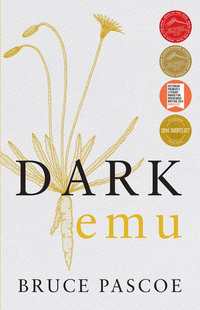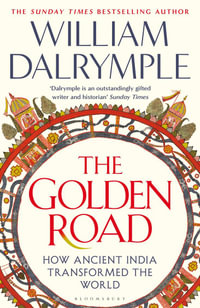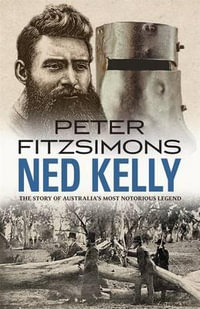Best Reference Books of 2012 presented by Library Journal
The Great Irish Famine is the most pivotal event in modern Irish history, with implications that cannot be underestimated. Over a million people perished between 1845-1852, and well over a million others fled to other locales within Europe and America. By 1850, the Irish made up a quarter of the population in Boston, New York City, Philadelphia, and Baltimore. The 2000 US census had 41 million people claim Irish ancestry, or one in five white Americans. Atlas of the Great Irish Famine (1845-52) considers how such a near total decimation of a country by natural causes could take place in industrialized, 19th century Europe and situates the Great Famine alongside other world famines for a more globally informed approach.
The Atlas seeks to try and bear witness to the thousands and thousands of people who died and are buried in mass Famine pits or in fields and ditches, with little or nothing to remind us of their going. The centrality of the Famine workhouse as a place of destitution is also examined in depth. Likewise the atlas represents and documents the conditions and experiences of the many thousands who emigrated from Ireland in those desperate years, with case studies of famine emigrants in cities such as Liverpool, Glasgow, New York and Toronto.
The Atlas places the devastating Irish Famine in greater historic context than has been attempted before, by including over 150 original maps of population decline, analysis and examples of poetry, contemporary art, written and oral accounts, numerous illustrations, and photography, all of which help to paint a fuller picture of the event and to trace its impact and legacy. In this comprehensive and stunningly illustrated volume, over fifty chapters on history, politics, geography, art, population, and folklore provide readers with a broad range of perspectives and insights into this event.
Industry Reviews
"This work offers accounts found in written and oral sources, and poetry, art, and photography, all enhanced by 200 new digitized maps to create a picture of this pivotal event."-Library Journal Reviews "This monumental work is far more than an Atlas, it is the definitive summary of all aspects of the Great Irish Famine. The many maps are accompanied by accessible yet scientifically sound texts. The demographics and geography are surveyed with unequaled detail and care, yet the historical background, the politics, and the economics of the Famine are discussed at an equally high scholarly level. Lavishly illustrated and scholarly immaculate, written by the best scholars in the field, this volume belongs in the library of everyone interested in the greatest natural disaster of the modern age."-Joel Mokyr,Northwestern University "This monumental work is strongly recommended for any library collection that includes Irish history, US immigration, or studies of the developing world."- Choice "The Atlas is an indispensable reference work and is precisely the sort of composite effort that will improve our understanding of the Famine."-Times Literary Supplement "Its fascinating information puts the famine into historical context, illustrated with full-color maps, line drawings, photos, documents and tables on nearly every page."- Family Tree Magazine "The Atlas is an important attempt to give an extremely wide-ranging and balanced overview of the Great Hunger."-Durrants "The Atlas achieves the remarkable feat of communicating both the most technical aspects of the famine as well as the most emotional...[as] the most thorough portrait of the famine to date, [it] puts us on the right side--the aware and communicative side, that is--of history."-Irish America Review of Books "Cork University Press has established an enviably high reputation in producing atlases. The latest - of the Great Irish Famine - maintains and enhances this record. Not only are the maps themselves innovative and attractive to look at, but they communicate clearly an abundance of information, often unfamiliar. The cartography is accompanied by a wealth of other images, sometimes strikingly beautiful, and also hauntingly distressful. In addition, a starry cast of experts provides incisive and illuminating commentary on all aspects of the disaster. All in all, this is likely to prove one of the most original and enduring studies of the grievous famine."-Toby Barnard,Oxford University "a powerful, unflinching account of the Famine as the defining event in Irish history...firmly rooted in recent scholarship...it has been a long time since an Irish- studies book appeared that everyone should read"-Irish Times "The Atlas if the Great Irish Famine is a brave, inventive new work of scholarship full of facts and ideas for anyone seeking to understand a pivotal moment in the life if the Irish at home and abroad."-Journal of American Ethnic History "This Atlas offers a powerful, unflinching and coherent understanding of the Irish Famine as the defining event in Irish history. It balances sweeping survey with minute details, while always attending to the surprising diversity of this small island in the mid nineteenth century. Its unparalleled assemblage of new maps, old images and extensive documentation offers a brilliant teaching aid for the history of Ireland and of the Irish diaspora. Firmly rooted in recent research, saturated in meticulous scholarship, and interdisciplinary in the best sense, it is unafraid to draw the necessary trenchant conclusions. Its broad synthesis offers the best overview we have ever had of this traumatic and defining episode."-Kevin Whelan,Keough Naughton Notre Dame Centre, Dublin "Crowley, William J. Smyth, and Mike Murphy (geography, geography emeritus, and cartographer, geography, respectively, University Coll., Cork, Ireland) have made a valuable contribution to studies of the Irish famine of the 1840s with this physically immense book that combines a classic atlas's functions with broader concerns." -Library Journal "Atlas of the Great Irish Famine succeeds in integrating scholarly elucidation of the tragedy and exploration of the human cost with accounts that still have the power to shock after 160 years."-Victorian Studies "Sweeping in scope and painstaking in detail, the atlas offers multiple perspectives and insights by way of first-person oral and written accounts, poetry, art, photography, and scholarship."- STARRED Booklist
























